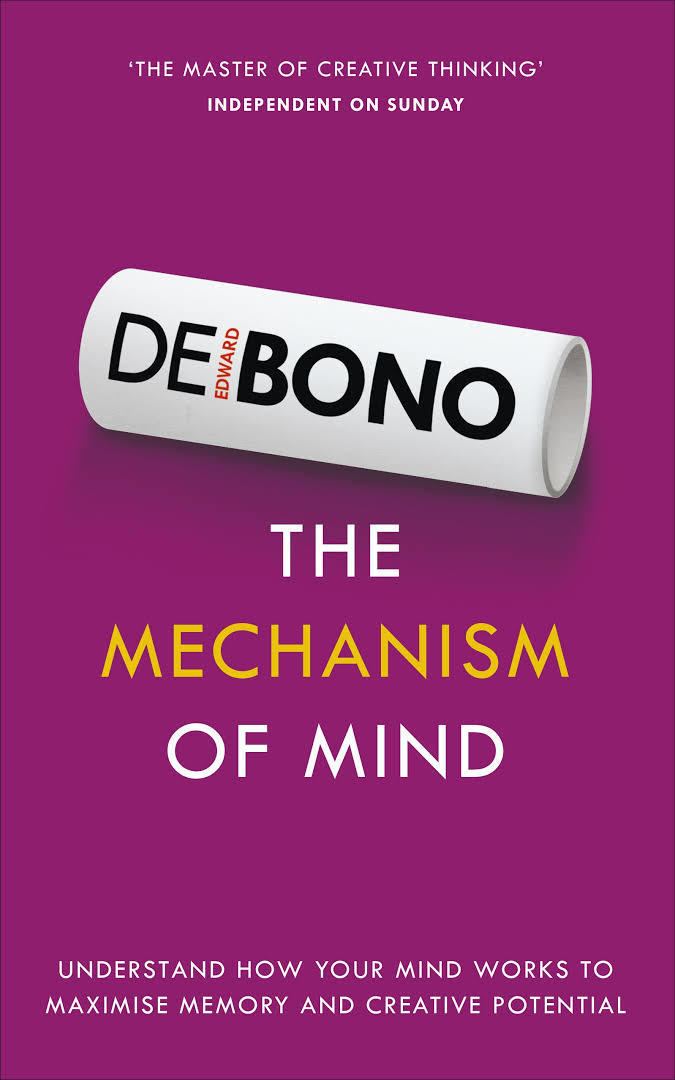7.8 /10 1 Votes
Originally published 1969 | 3.9/5 Goodreads | |||||||||||||||||||||||||||||||||
 | ||||||||||||||||||||||||||||||||||
Similar Works by Edward de Bono, Thought books, Other books | ||||||||||||||||||||||||||||||||||
The book The Mechanism of Mind by Edward de Bono details the underpinning model of mind that leads to the many thinking skills developed by its author, including lateral thinking.
Contents
The Model
The model detailed in the book, and referred to again in many of Edward de Bono's other books, is one of Neurones networked together by many stronger and weaker connections and activating as a result of input stimulus or stimulation from other neurones that are themselves active. Neurones that are active together form stronger connections and are more likely to activate together in the future. The model is a Self-organizing system.
It is not intended that the model be a detailed analysis of how human brains are structured but the broadest possible abstraction that can provide meaningful understanding of the nature of thinking. Nor is it intended to build a cohesive theory but to provide the reader with a collection of concepts that will illuminate further thinking about thinking.
More detailed models and theories specifically about the brain can be found under the topic of Cognitive Science and connectionism.
Behaviour of the Model
The characteristic behaviour of the system is shown to create and reinforce patterns. The current set of patterns in the system determine how new experiences are integrated. Attention tends to flow along well-worn paths and patterns have large catchment areas. Novel experiences are often lost as attention flows down old paths that are in some way similar to the new experience. Sometimes starting at a different point in an established pattern can lead to a jump out of that pattern to a new one.
These behaviours are analogs to human thinking behaviours such as circular thinking, prejudice, polarisation, insight and humour.
Consequences
The mind as modeled has some severe limitations.
From The Mechanism of Mind page 182:
Thinking modes such as Natural Thinking, Logical Thinking, Mathematical Thinking and Lateral Thinking, are examined in the light of these limitations to see how they may be addressed. The techniques of Lateral Thinking are shown to be specifically designed to bypass these limitations.
